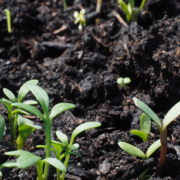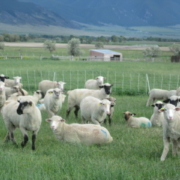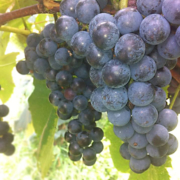A Spring IPM Toolbox for Controlling Powdery Mildew in Vineyards
 Print This Post
Print This Post
By Katherine Favor, NCAT Sustainable Agriculture Specialist
Spring is in full bloom here in California! Every day, I wake up with excitement to see what new bit of life decided to bloom while I was sleeping. The tiny leaves on the sycamore trees that arch over my street are just starting to peak out from their long-dormant branches. The almond orchards nearby have already burst into bloom and have now left a carpet of snowy-white blossoms on the ground. My cilantro plants are finally starting to sprout up in my garden. And I have new neighbors: some recently hatched baby ducks! All around, new life is budding and growing. Added to this list of lovely baby animals and blossoms, however, are some not-so-lovely life forms that are also starting to bud and grow with the warm weather. One of them is the ever-dreaded Erysiphe necator (also known as Uncinula necator), commonly known as powdery mildew. Day by day, as the weather gets warmer, this threatening fungus is multiplying and growing. As grape growers, it is important that we control it using all of the integrated pest-management tools at our disposal, so that we can keep it in check as the growing season continues.
Powdery mildew has plagued vineyards since time immemorial. If temperatures reach between 70 and 85 degrees, chances are, powdery mildew has woken up from its slumber and is ready to infect your grapes. When left unchecked, this fungus can reduce vine growth, sabotage yields, and reduce fruit quality. There are all sorts of practices in our integrated pest-management toolbox that we can use to control powdery mildew. Prevention is always number one, but there are plenty of mitigation strategies we can employ as well. Here are some good examples:
- If you’re just starting a vineyard and your grapes aren’t planted yet, this one’s for you. Before planting, really get to know your area. If you’re growing grapes in a humid area that’s predisposed to powdery mildew, make sure you’re planting grapes with loose clusters, so that there is airflow between the berries themselves. In humid parts of California, this means, for example, growing varieties like Syrah or Tempranillo, which have smaller berries and looser clusters, instead of Sangiovese, which has big berries and tight clusters.
- Pave the way for your future vine architecture when you’re pruning so that there is better airflow once shoots start to grow. Pruning is the time to establish your vine architecture and decide what your vines’ future vegetation is going to look like. In the winter, prune methodically so that you have an uncrowded canopy come Spring. What does this mean, practically speaking? If you’re using the vertical-shoot-positioned trellis system (the most common one), it means making sure spurs are at least one fist-width apart from each other and pruning to just one or two buds per spur so that vegetative growth is kept in check in the Spring.
- Manage vineyard nutrition well. It’s important that grapes get enough nutrients to produce a high yield, but too much nitrogen can result in excess vegetative growth, which results in—you guessed it—less air flow and more powdery mildew.
- Once your shoots sprout, make sure you are shoot thinning early in the season (if you’re reading this in April, that means now!). Get rid of suckers, doubles, laterals, and basal buds that have sprouted. Keep the trellis system less crowded so that there’s more airflow.
- Leaf pull. If shoot thinning didn’t quite cut it, and if you still don’t have enough airflow in your vineyard, pull some leaves. Leaf pulling in and of itself is an art, and we could dedicate an entire blog post to it alone. The important thing to remember is to remove enough leaves in the fruit zone to get good air flow, but to leave enough leaves so as to prevent sunburn and to create that perfect “dappled light” effect in the canopy. Leaf pulling can be labor-intensive and expensive, but it does a great job at creating more air flow in the canopy and also creating the right light conditions for high-quality wine.
- If these five methods aren’t enough, you will need to spray for powdery mildew. BUT what, when, how often, and how much you spray depends on a lot of factors!

Getting ready to apply organic JSM Stylet Oil to control powdery mildew after having used the Powdery Mildew Index to time the sprays. Photo: Katherine Favor, NCAT
- What fungicide should you spray? Common pesticides for use in powdery mildew control in grapes and their modes of action are included in Table 1. No matter what, you should always alternate the mode of action of the fungicide so that powdery mildew doesn’t develop resistance.
- When should you spray? Prevention is key with powdery mildew control. It’s a good idea to spray with lime sulfur once during the dormant season to kill overwintering spores, and to also spray with a contact material after budbreak to knock out colonies early on. After that, you should use thresholds to determine when you spray. Which leads us to…
- How often should you spray? One of the principles of integrated pest management is using “action thresholds”—which means monitoring to determine when a pest problem is significant enough to warrant action. After the initial two sprays during the dormant season and just after budbreak, we need to monitor levels of powdery mildew infestation and spray at strategic times, only once infestation levels have reached a certain level. Using thresholds is good for the environment, is good for preventing pesticide resistance, and is good for your wallet, too. A tried-and-true tool for determining the correct threshold to time your sprays is the UC Davis Powdery Mildew Index. It tracks powdery mildew’s life and reproductive cycles by monitoring daily temperature, and it’s easy to use.
- How much should you spray? Every pesticide is different. Make sure to always read labels carefully and to apply the recommended dose based on your acreage, your crop, and the calibration of your sprayer.
Table 1. Abbreviated list of common pesticides for powdery mildew control and their modes of action, adapted from the ATTRA Biorationals: Ecological Pest Management Database. For a complete list of pesticides approved for powdery mildew control, visit ATTRA’s Biorationals: Ecological Pest Management Database.

The Spring vineyard IPM toolbox is full of preventative, cultural, and chemical methods that will help you control powdery mildew in your vineyard. By planting site-specific varieties, pruning well, shoot thinning, leaf pulling, managing nutrition, carefully monitoring the powdery mildew life cycle, and applying appropriately-timed sprays, you will be able to keep powdery mildew under control in your vineyard. Sigh of relief! Now instead of watching the powdery mildew spores bloom, we can get back to watching the flowers bloom. Happy Spring!
Related Resources:
High Tunnel Tree Fruit and Grape Production for Eastern Growers
Biorationals: Ecological Pest Management Database
Use of Baking Soda as a Fungicide
Biointensive Integrated Pest Management (IPM)
Managing Pests Organically in the Garden and Orchard
UC Pest Management Guidelines: Grape Powdery Mildew
Please complete a brief survey to let us know your thoughts about the content of this blog.
This blog is produced by the National Center for Appropriate Technology through the ATTRA Sustainable Agriculture program, under a cooperative agreement with USDA Rural Development. ATTRA.NCAT.ORG.

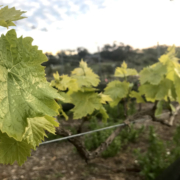
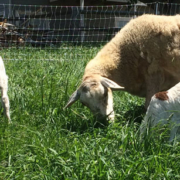

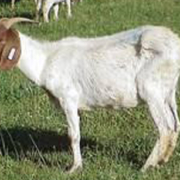
 NCAT
NCAT